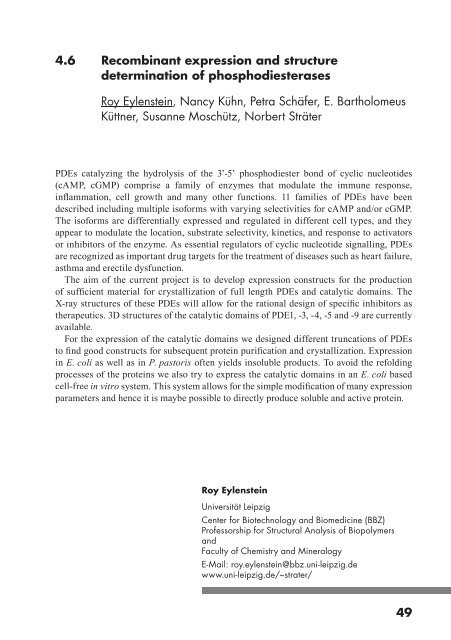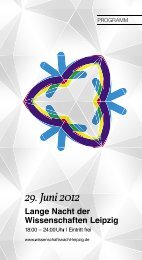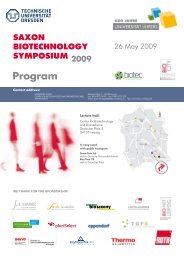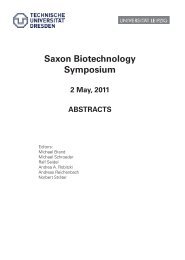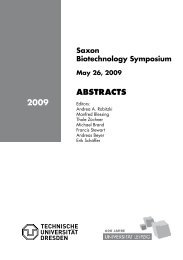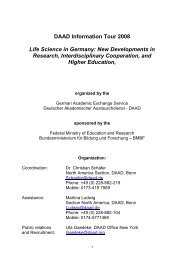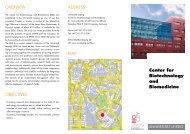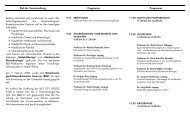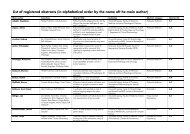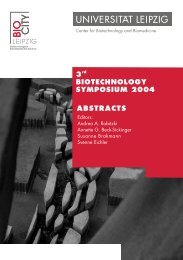biotechnology symposium 2005 abstracts - Universität Leipzig
biotechnology symposium 2005 abstracts - Universität Leipzig
biotechnology symposium 2005 abstracts - Universität Leipzig
You also want an ePaper? Increase the reach of your titles
YUMPU automatically turns print PDFs into web optimized ePapers that Google loves.
4.6 Recombinant expression and structure<br />
determination of phosphodiesterases<br />
Roy Eylenstein Eylenstein, Nancy Kühn, Petra Schäfer, E. Bartholomeus<br />
Küttner, Susanne Moschütz, Norbert Sträter<br />
PDEs catalyzing the hydrolysis of the 3’-5’ phosphodiester bond of cyclic nucleotides<br />
(cAMP, cGMP) comprise a family of enzymes that modulate the immune response,<br />
infl ammation, cell growth and many other functions. 11 families of PDEs have been<br />
described including multiple isoforms with varying selectivities for cAMP and/or cGMP.<br />
The isoforms are differentially expressed and regulated in different cell types, and they<br />
appear to modulate the location, substrate selectivity, kinetics, and response to activators<br />
or inhibitors of the enzyme. As essential regulators of cyclic nucleotide signalling, PDEs<br />
are recognized as important drug targets for the treatment of diseases such as heart failure,<br />
asthma and erectile dysfunction.<br />
The aim of the current project is to develop expression constructs for the production<br />
of suffi cient material for crystallization of full length PDEs and catalytic domains. The<br />
X-ray structures of these PDEs will allow for the rational design of specifi c inhibitors as<br />
therapeutics. 3D structures of the catalytic domains of PDE1, -3, -4, -5 and -9 are currently<br />
available.<br />
For the expression of the catalytic domains we designed different truncations of PDEs<br />
to fi nd good constructs for subsequent protein purifi cation and crystallization. Expression<br />
in E. coli as well as in P. pastoris often yields insoluble products. To avoid the refolding<br />
processes of the proteins we also try to express the catalytic domains in an E. coli based<br />
cell-free in vitro system. This system allows for the simple modifi cation of many expression<br />
parameters and hence it is maybe possible to directly produce soluble and active protein.<br />
Roy Eylenstein<br />
<strong>Universität</strong> <strong>Leipzig</strong><br />
Center for Biotechnology and Biomedicine (BBZ)<br />
Professorship for Structural Analysis of Biopolymers<br />
and<br />
Faculty of Chemistry and Mineralogy<br />
E-Mail: roy.eylenstein@bbz.uni-leipzig.de<br />
www.uni-leipzig.de/~strater/<br />
49


